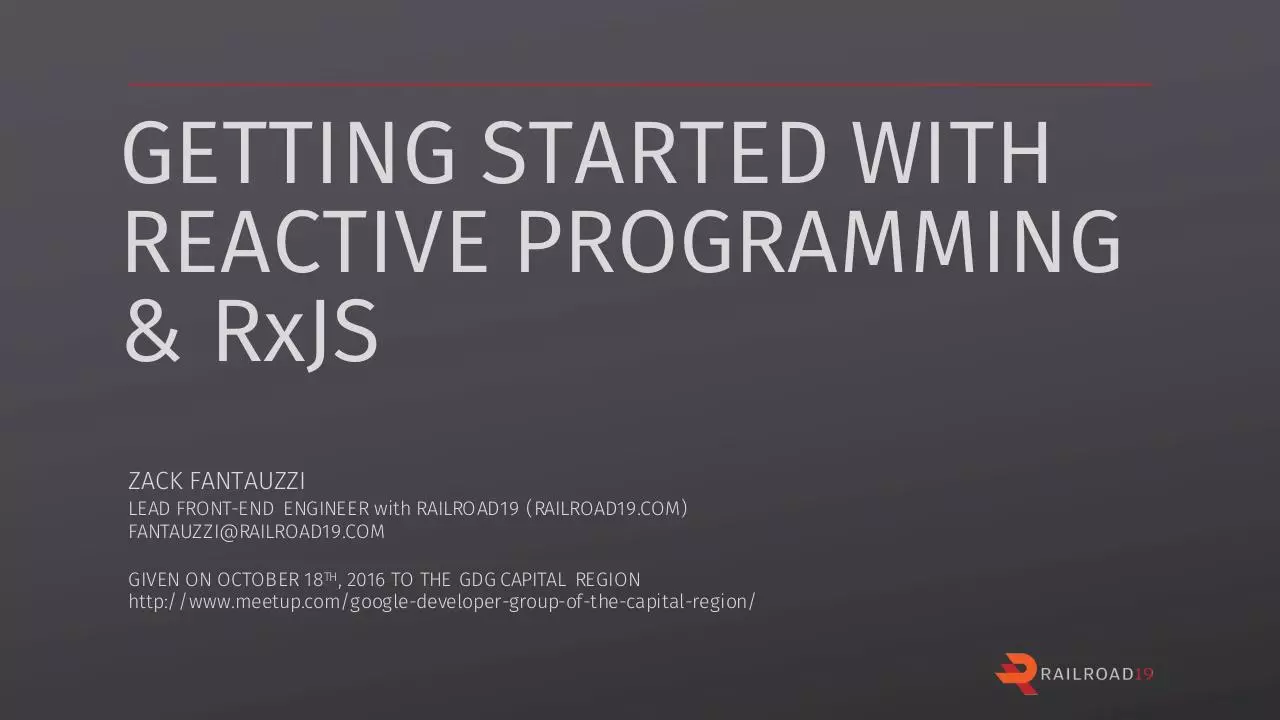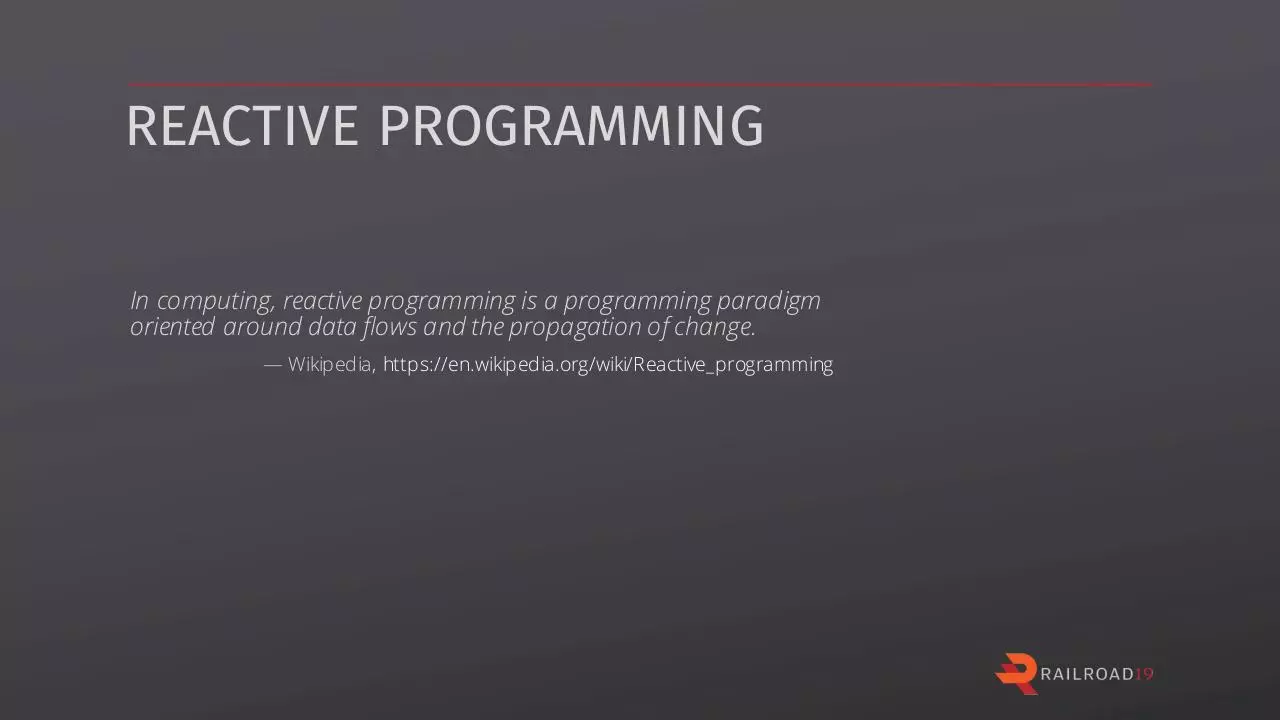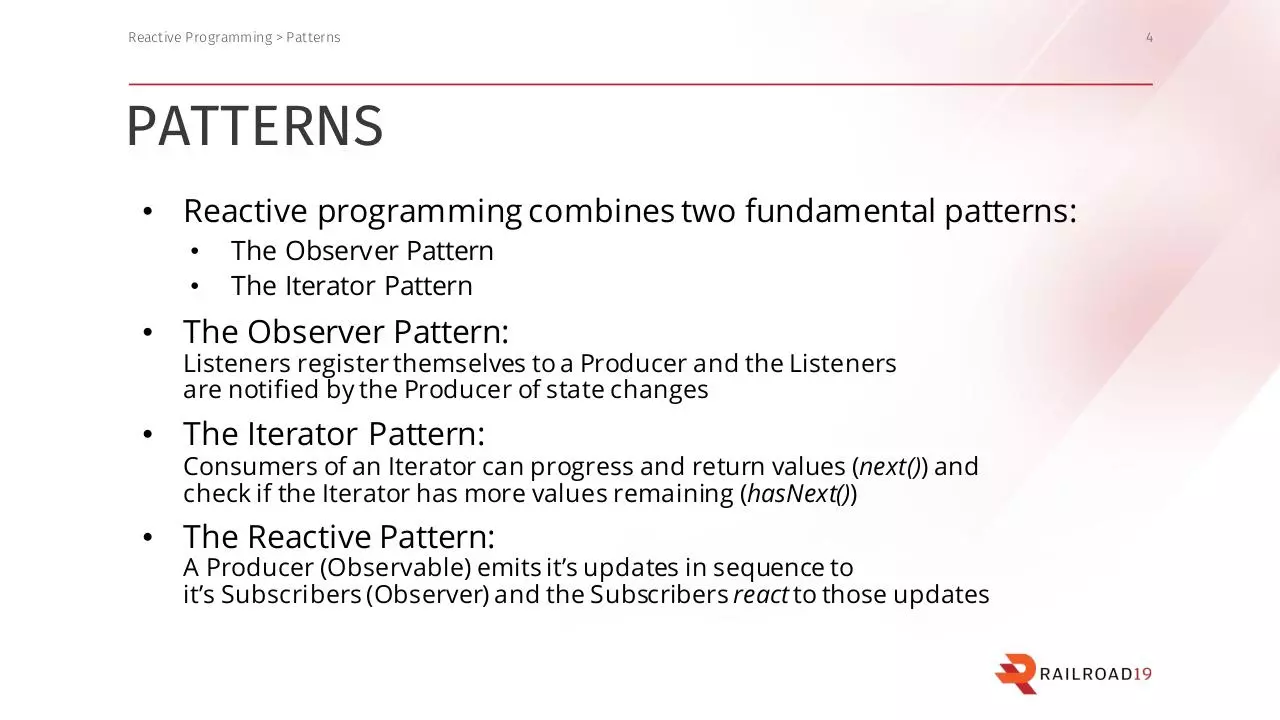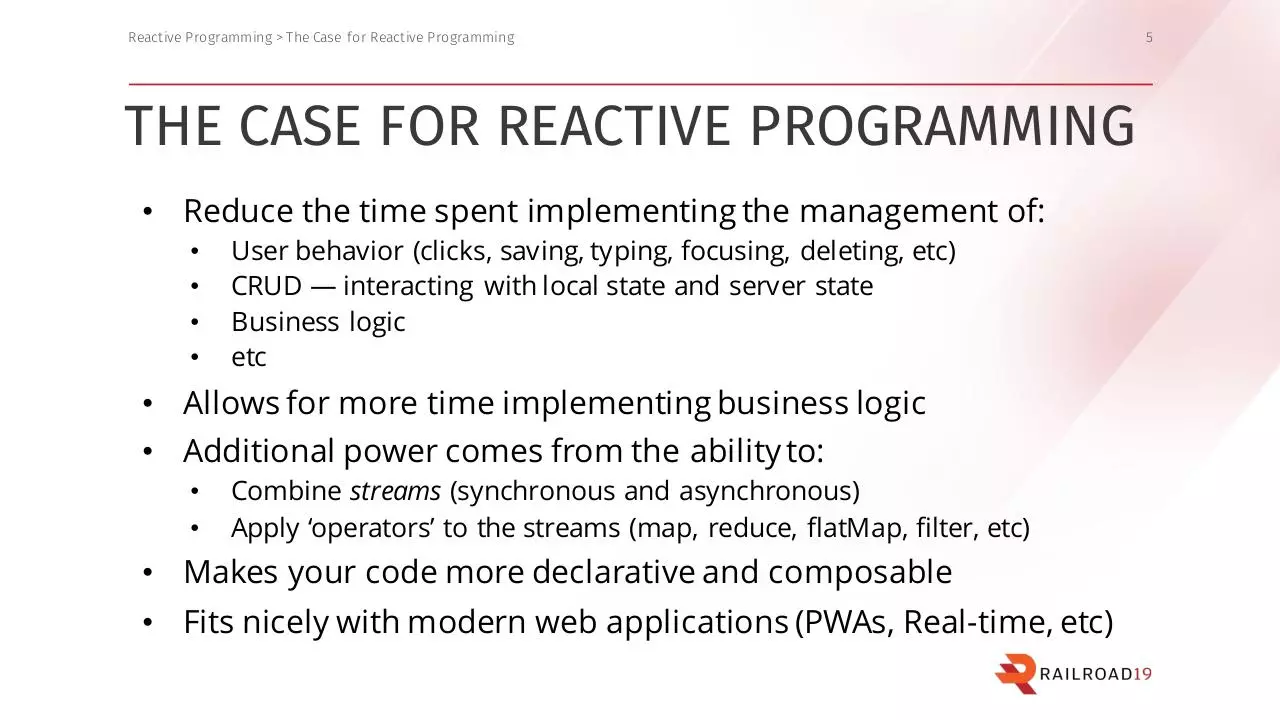rp with rxjs (PDF)
File information
Title: rp_with_rxjs
This PDF 1.3 document has been generated by PowerPoint / Mac OS X 10.10.5 Quartz PDFContext, and has been sent on pdf-archive.com on 21/10/2016 at 17:36, from IP address 74.76.x.x.
The current document download page has been viewed 954 times.
File size: 4.7 MB (30 pages).
Privacy: public file





File preview
GETTING STARTED WITH
REACTIVE PROGRAMMING
& RxJS
ZACK FANTAUZZI
LEAD FRONT-END ENGINEER with RAILROAD19 (RAILROAD19.COM)
FANTAUZZI@RAILROAD19.COM
GIVEN ON OCTOBER 18TH, 2016 TO THE GDG CAPITAL REGION
http://www.meetup.com/google-developer-group-of-the-capital-region/
REACTIVE PROGRAMMING
In computing, reactive programming is a programming paradigm
oriented around data flows and the propagation of change.
— Wikipedia, https://en.wikipedia.org/wiki/Reactive_programming
Reactive Programming > Concepts
CONCEPTS
• Everything is a stream of data
•
•
•
•
Click, Drag, Focus, Blur, etc (events)
Collections (arrays)
Network Requests and Responses
Variables
• Compose chains of operators to react to streams
• Pushing changes vs polling for changes
•
•
New values/changes are published
Subscribers (1 or more) receive the changes and act accordingly
• An application is a collection of aysnc events and state changes
3
Reactive Programming > Patterns
PATTERNS
• Reactive programming combines two fundamental patterns:
•
•
The Observer Pattern
The Iterator Pattern
• The Observer Pattern:
Listeners register themselves to a Producer and the Listeners
are notified by the Producer of state changes
• The Iterator Pattern:
Consumers of an Iterator can progress and return values (next()) and
check if the Iterator has more values remaining (hasNext())
• The Reactive Pattern:
A Producer (Observable) emits it’s updates in sequence to
it’s Subscribers (Observer) and the Subscribers react to those updates
4
Reactive Programming > The Case for Reactive Programming
THE CASE FOR REACTIVE PROGRAMMING
• Reduce the time spent implementing the management of:
•
•
•
•
User behavior (clicks, saving, typing, focusing, deleting, etc)
CRUD — interacting with local state and server state
Business logic
etc
• Allows for more time implementing business logic
• Additional power comes from the ability to:
•
•
Combine streams (synchronous and asynchronous)
Apply ‘operators’ to the streams (map, reduce, flatMap, filter, etc)
• Makes your code more declarative and composable
• Fits nicely with modern web applications (PWAs, Real-time, etc)
5
VISUALIZING REACTIVE SEQUENCES
If you can’t draw it, you don’t understand it.
Visualizing Reactive Sequences > Marble Diagrams
MARBLE DIAGRAMS
• Just like traditional UML diagrams
(Swim-lane, Sequence, Interaction, etc)
• Marble diagrams offer a great way to illustrate the concept of:
value over time
• Here is the ‘academic’ marble diagram created by the Rx team:
7
Visualizing Reactive Sequences > Marble Diagrams: map()
8
MARBLE DIAGRAMS
Example 1: map()
1
2
3
map(x => 1.5 * x)
1.5
3
4.5
Visualizing Reactive Sequences > Marble Diagrams: debounce()
9
MARBLE DIAGRAMS
Example 2: debounce(time) OR debounceTime(time) via RxJS5
1
2
3
4
5
6
7
debounce(10)
1
5
7
Download rp with rxjs
rp_with_rxjs.pdf (PDF, 4.7 MB)
Download PDF
Share this file on social networks
Link to this page
Permanent link
Use the permanent link to the download page to share your document on Facebook, Twitter, LinkedIn, or directly with a contact by e-Mail, Messenger, Whatsapp, Line..
Short link
Use the short link to share your document on Twitter or by text message (SMS)
HTML Code
Copy the following HTML code to share your document on a Website or Blog
QR Code to this page

This file has been shared publicly by a user of PDF Archive.
Document ID: 0000497575.